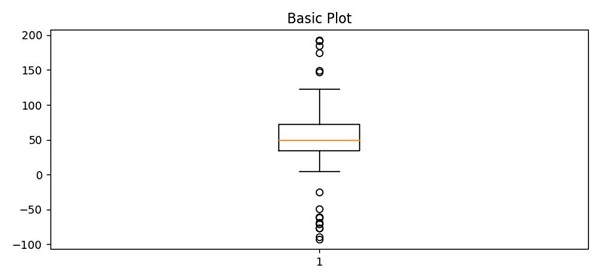
 Data Structure
Data Structure Networking
Networking RDBMS
RDBMS Operating System
Operating System Java
Java MS Excel
MS Excel iOS
iOS HTML
HTML CSS
CSS Android
Android Python
Python C Programming
C Programming C++
C++ C#
C# MongoDB
MongoDB MySQL
MySQL Javascript
Javascript PHP
PHP
- Selected Reading
- UPSC IAS Exams Notes
- Developer's Best Practices
- Questions and Answers
- Effective Resume Writing
- HR Interview Questions
- Computer Glossary
- Who is Who
Pythonic way of detecting outliers in one dimensional observation data using Matplotlib
To detect outliers in one dimensional observation data, we can take the following Steps −
Create spread, center, flier_high and flier_low.
Using the above data (Step 1), we can calculate data.
Use the suplots() method to create a figure and a set of subplots, i.e., fig1 and ax1.
Set the title of ax1.
Now using the boxplot() method and data, make a box and a whisker plot. Beyond the whiskers, data are considered outliers and are plotted as individual points.
To display the figure, use the show() method.
Example
from matplotlib import pyplot as plt
import numpy as np
plt.rcParams["figure.figsize"] = [7.50, 3.50]
plt.rcParams["figure.autolayout"] = True
np.random.seed(19680801)
spread = np.random.rand(50) * 100
center = np.ones(25) * 50
flier_high = np.random.rand(10) * 100 + 100
flier_low = np.random.rand(10) * -100
data = np.concatenate((spread, center, flier_high, flier_low))
fig1, ax1 = plt.subplots()
ax1.set_title('Basic Plot')
ax1.boxplot(data)
plt.show()
Output


Advertisements
